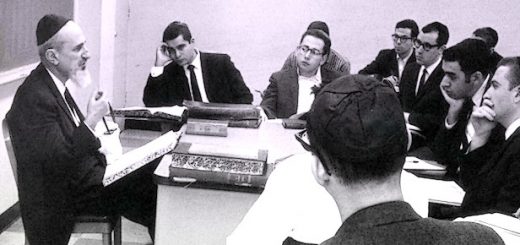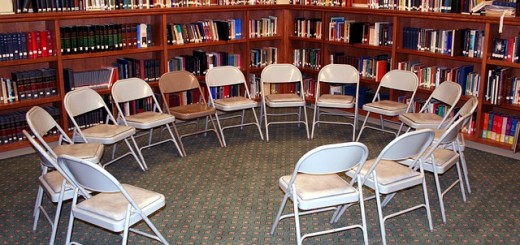The Hora, the Hassidic Tune, and the Memorial for Fallen Soldiers

“That’s a premier Israeli folksong,” claimed someone from the audience when my co-translator and I showed a video of a Sanz hassidim singing a piyut sung at Seudah Shlishit on Shabbat. I ruminated on this tune today, as I recited Psalms during the “minute of silence” on Remembrance Day for Israel’s fallen soldiers. This piyut came to my attention because it is mentioned on the last page of Rav Haim Sabato’s autobiographical novel on the Yom Kippur War, Adjusting Sights. A Yom Hazikaron radio interview with Rav Sabato is in the archives of Galey Zahal (scroll to the bottom and go to p.6), Remembrance Day, “V’Chai Bahem: Faith and Memory.”
The comment, “That’s a premier Israeli folksong” was made when my co-lecturer and I analyzed how Hillel Halkin handled challenges in translating into English the final passage in Adjusting Sights. (The book was also made into a movie ) In the book’s final page the aforementioned nigun to the piyut E-l Mistater is the thread that connects Rabbi Haim Halberstam of Sanz (b.1793), with his great grandson, the late Sanz-Klausenburg Rebbe during the Shoah. The tune then encompasses the yeshiva hesder soldiers in the 1973 War. R Sabato describes Shabbat during a lull in the battle on the Golan Heights
I looked back at the moon. A small cloud had drifted across it. Although it still shone, its light was no longer as bright. Shlomo put a hand on my shoulder. Softly he began to sing the hymn E-l Mistater, “O God Who Hides In Heaven’s Vaults,” which was a favorite of the Rabbi of Klausenberg. According to the rabbi’s Hasidim, he had sung it to himself every Sabbath in the death camps at the time of the Third Meal. His great grandfather, the tzaddik Rabbi Haim of Sanz, sang it then too, in that hour of grace as the Sabbath draws to a close, that hour that is the hour of all hours, his face shining like an angel’s.
We showed a video of the Klausenberger ztz”l, who survived the Shoah but lost his wife and eleven children, and went on to build Kiryat Sanz and Laniado hospital in Netanya, and Sanz branches elsewhere.
I was curious about the “hymn” mentioned in the passage, and since I live among Sanz hassidim I was able to make a video of a neighbor and his sons singing E-l Mistater. When we screened the piyut-hymn-nigun at the International Translators’ Conference someone in the audience claimed that was the same tune as Rad Halayla, the most famous dance and folksong after Hava Nagila. Several version of Rad Halayla (original title:Rav Halayla) can be heard on the internet. Same tune, new words.
This sent me into research mode and I found that the lyrics to Rad Halayla were written by Israel prize-winning poet Yaakov Orland to “a hassidic nigun” according the the Zemereshet website which has the lyrics Orland had left Galicia and come on aliya as a halutz. The song Rad Halayla has become so iconic, if one can say that about a tune, that it is sung and danced in the final scene of the new movie about pre-State Israel, “The Little Traitor” (based on Amos Oz’s novel Panther in the Basement). At the end of the film the UN votes on November 29, 1947 to create a State. Jerusalemites break out in song and hora dance to Rad Halayla. Once you hear the music on the internet Israel travelogue you’ll recognize it.
The words to the kabbalistic Shabbat piyut E-l Mistater begin with a reference to G-d’s hiddenness, E-l Mistater bShafrir Hevyon (A different translation from Halkin’s is given byArtscroll: G-d conceals Himself in the beauty of secrecy.)
So this peripatetic tune came to the Land of Israel in at least two ways. Orland, a secular pioneer oleh from a hassidic mileu, came to Eretz Israel as a refuge from the 1919 Ukrainian pogroms and thus it became a musical symbol of pre- and post- 1948 Israel, with his new lyrics. Orland heard the nigun sung by the Boyan-Bernstein hassidim in Jerusalem. The tune came a second route with the Klausenberger Rebbe in the 1950’s. He had sung it to buoy his and others’ spirits in the concentration camps, and a hesder yeshiva tankist sang it to buoy his buddies’ spirits in 1973. Today, the same tune is still sung in Israel, albeit to two different sets of words: Rad Halayla by one group, and E-l Mistater by the other.
P.S. Perhaps the different sectors of the population are not so far apart. Last night, the eve of Remembrance Day for the Fallen of Israel’s Wars and for Terror Victims (the official holiday name) the haredi radio station Radio Kol Chai broadcast the army ceremony from the Wall. I toggled between the army radio station and Radio Kol Chai. When there was instrumental music at the ceremony, Radio Kol Chai simply substituted an a capello boys’ choirs (in order not to broadcast instrumental music during the Sefira period). The solution was arrived at because both sides communicated with each other beforehand so there were no surprises and Radio Kol Chai could participate and broadcast, planning adjustments in advance in order to maintain its standards. Later Army Rabbi Dov Povalsky, grandson of the one of the founding rabbis of Ponevizh yeshiva in Bene Brak, explained how important it was to honor the fallen through study of mishnayot and recitation of Psalms. This does not obviate the fact that there are very serious shortcomings in the State and Rav Povalsky differentiated between Remembrance Day, and Independence Day. Yet he pointed out that his grandfather did hoist a flag on the Ponevizh yeshiva (and stationed guards to keep it there) on Remembrance and Independence Days.
As night falls on Remembrance Day, as Rad Halayla, yehe zichram baruch.




Wonderful article. Thank you.Cross-Currents should have more like this. And not just leave it to Rabbi Adlerstein
There are few writers who manage to successfully be part of the charedi and RW Zionist world. Mrs. Schmidt is one of them. It is a pleasure to read her thoughtful words.
Ecept for the fact that listening to music during sefira if not permitted, as my wife told me when I clicken on to the link, this is an interesting tidbit. It makes sense that the halutzim hummed tunes that t hey learned as children and gave them new words. What amazes me is th atthe Klausenberger Rebbe’s followers have rebuilt after the destruction and are growing in numbers while the socialists are passe. Who would have predicted that a few generations back.
Great article. Is this video available on the internet?
A.J. Heschel once said about Kol Nidre: “It’s not the words that matter, but rather the melody.”
Beautiful and moving article.
Thanks to Cross currents for printing it and to Shira L. Schmidt for taking the time to research and write this.